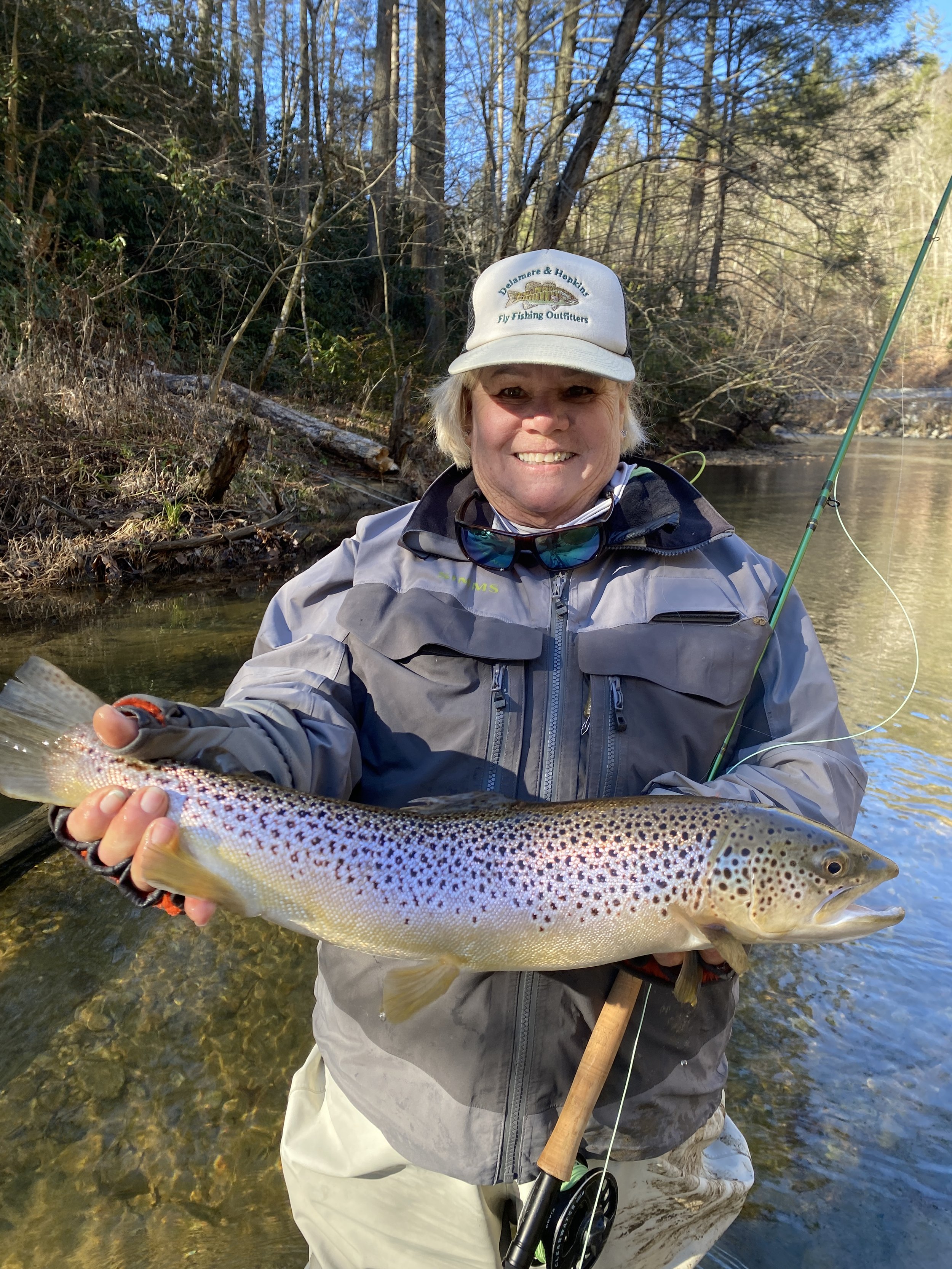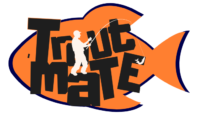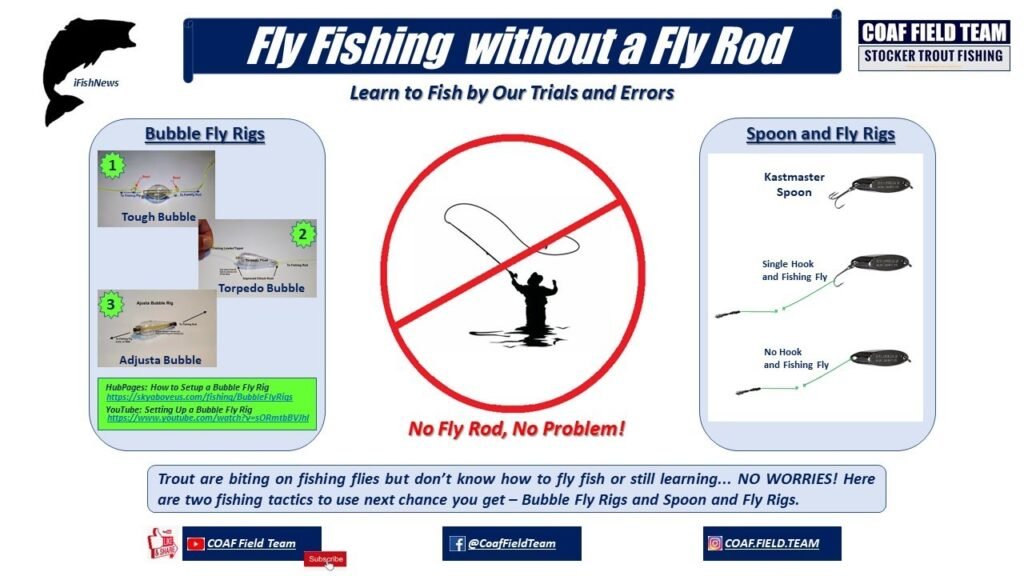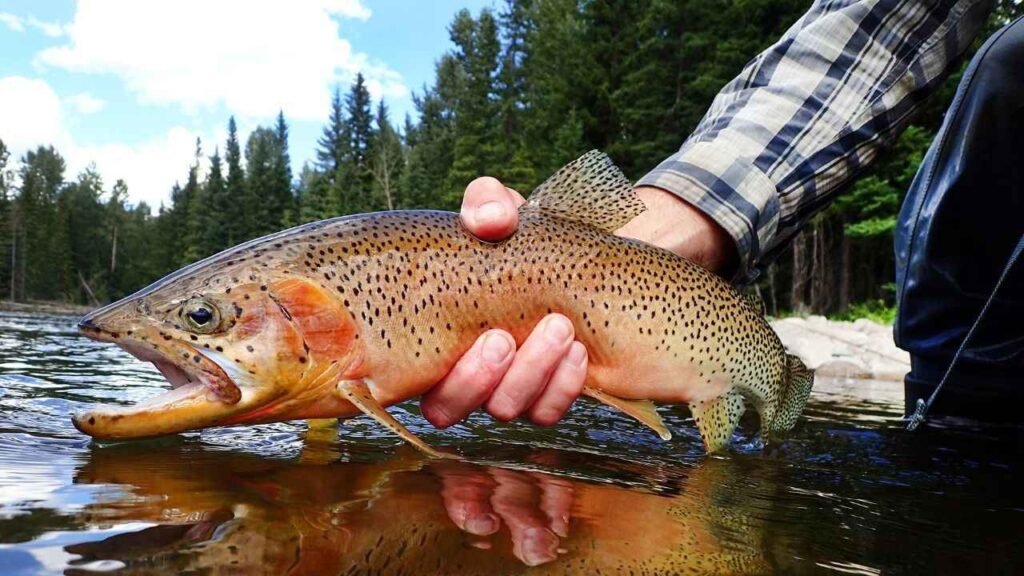Yes, you can catch trout without fly fishing. Many anglers use different methods to catch trout.
Fly fishing is popular, but it’s not the only way. Trout fishing can be fun and rewarding, even without a fly rod. Techniques like spin fishing and bait fishing can be effective. These methods are often easier for beginners. Many anglers prefer these techniques for their simplicity.
Using lures, worms, or other baits can attract trout. Lakes, rivers, and streams offer various fishing opportunities. Trout can be caught with basic gear and some patience. This makes it accessible to everyone. Whether you are a seasoned angler or a beginner, there are many ways to enjoy trout fishing. Let’s explore some of these methods.

Credit: www.thecatawbaangler.com
Introduction To Trout Fishing
Trout fishing is a beloved pastime for many. This type of fishing doesn’t always need fly fishing techniques. You can catch trout using other methods. Let’s explore the history, popularity, and benefits of trout fishing.
Brief History
Trout fishing has a rich history. It dates back to ancient times. People have always been fascinated by trout. They lived in clean, cool waters. Early methods included simple rods and bait. Over the years, techniques evolved. Modern anglers use advanced gear. Yet, the essence remains the same.
Popularity And Benefits
Trout fishing is very popular today. Many enjoy it for its simplicity. It’s a great way to relax. You can fish in rivers, lakes, or streams. Each location offers a unique experience. Besides, trout fishing provides health benefits. It promotes outdoor activity. It’s a chance to enjoy nature.
| Benefit | Description |
|---|---|
| Relaxation | Fishing helps reduce stress. |
| Physical Activity | It encourages walking and movement. |
| Connection with Nature | Spending time outdoors is refreshing. |
Many people also appreciate the social aspect. Fishing with friends or family is fun. You can share stories and tips. It’s a bonding experience. Also, it’s not just for adults. Kids can learn to fish too. It’s a skill they can enjoy for life.
In summary, trout fishing is accessible and enjoyable. It’s an activity that offers both relaxation and excitement. Whether a beginner or an expert, you can have a great time fishing for trout.
Understanding Trout Behavior
To catch trout without fly fishing, you need to understand their behavior. Knowing where they live and what they eat helps a lot. This can make your fishing trips successful and enjoyable.
Habitat Preferences
Trout prefer clean, cold water. They thrive in rivers, streams, and lakes with plenty of oxygen. You can find them in areas with lots of cover, such as rocks, logs, and underwater plants. These spots provide safety from predators.
Trout also like deeper water. They often hide in deep pools during the day. In the morning and evening, they move to shallower areas to feed. Look for them near the edges of streams or in slow-moving water.
Feeding Patterns
Trout are opportunistic feeders. They eat a variety of food, depending on what is available. Their diet includes insects, small fish, and crustaceans. They also eat worms and other small aquatic creatures.
Knowing their feeding patterns helps you choose the right bait. Insects are a big part of their diet, especially during hatches. During these times, trout feed aggressively on the surface. Small fish and minnows work well as bait in deeper waters.
Trout feed more actively during certain times of the day. Early morning and late evening are prime feeding times. They also tend to feed more before a storm or weather change. Paying attention to these patterns can increase your chances of success.
Essential Gear For Trout Fishing
Trout fishing doesn’t always require fly fishing. With the right gear, you can catch trout using different methods. Knowing the essential gear for trout fishing can make your fishing trips more successful and enjoyable. Below, we will discuss the key items you need, focusing on rods and reels, and baits and lures.
Rods And Reels
A good rod and reel are crucial for trout fishing. Lightweight rods are ideal because they provide better sensitivity. This allows you to feel even the slightest bite. Rods between 6 to 7 feet long are perfect for most trout fishing scenarios.
For reels, a spinning reel is a popular choice. It offers ease of use and versatility. Look for reels with a smooth drag system. This helps you manage the fish without breaking your line. Also, ensure that the reel matches your rod’s weight and size.
Baits And Lures
Choosing the right bait or lure is essential for attracting trout. Live baits like worms and minnows are highly effective. They mimic the natural food sources of trout. You can also use artificial lures such as spoons, spinners, and soft plastics.
Here is a simple table to help you choose the best lures for different conditions:
| Type of Lure | Best Condition |
|---|---|
| Spoons | Clear water |
| Spinners | Murky water |
| Soft Plastics | Slow currents |
Experiment with different baits and lures to find what works best for you. Always carry a variety in your tackle box.
Bait Fishing Techniques
Fishing for trout without fly fishing is possible and enjoyable. One effective method is using bait fishing techniques. These techniques can be straightforward and rewarding. Let’s explore two key methods: natural baits and artificial baits.
Natural Baits
Natural baits are a traditional and effective way to catch trout. They mimic the trout’s natural diet. Here are some popular natural baits:
- Worms: Easy to find and use. Trout love them.
- Insects: Grasshoppers and crickets work well.
- Small Fish: Minnows and small shiners are excellent choices.
Using natural baits requires less gear than fly fishing. Just a simple rod, hook, and some patience.
Artificial Baits
Artificial baits are designed to mimic natural food sources. They come in various shapes, sizes, and colors. Here are some types of artificial baits:
- Spinners: These create vibrations in the water, attracting trout.
- Spoons: They mimic small fish, perfect for luring trout.
- Soft Plastics: These imitate worms and other insects.
Artificial baits can be used in different water conditions. They are durable and reusable, making them a cost-effective choice.
| Bait Type | Advantages | Disadvantages |
|---|---|---|
| Natural Baits | Easy to find, highly effective | Can be messy, not reusable |
| Artificial Baits | Durable, reusable, versatile | May require more skill to use |
Both natural and artificial baits have their pros and cons. Choose based on your preference and fishing conditions.
Spin Fishing Methods
For those who think trout fishing is only about fly fishing, think again. Spin fishing offers an effective alternative. It allows anglers to catch trout with various lures and baits. This method is perfect for beginners and seasoned fishers alike. Let’s dive into some popular spin fishing methods.
Spinners And Spoons
Spinners and spoons are classic tools for spin fishing. These lures mimic small fish or insects, which attract trout. They come in various sizes and colors. You can choose one based on water conditions and trout preferences.
Spinners have a rotating blade that creates vibrations in the water. These vibrations attract trout. You simply cast the spinner and retrieve it at a steady pace. The spinning action does the rest.
Spoons are curved, metal lures that wobble as you reel them in. This wobbling motion looks like a wounded fish. It entices trout to strike. Spoons work well in both rivers and lakes.
| Feature | Spinners | Spoons |
|---|---|---|
| Action | Rotating blade | Wobbling motion |
| Best for | Steady retrieval | Varying speeds |
| Environment | Streams and rivers | Lakes and ponds |
Soft Plastics
Soft plastics are another versatile option for spin fishing. These lures come in many shapes and sizes. They can resemble worms, minnows, or even insects.
Using soft plastics involves a bit more technique. You can rig them in different ways. One popular method is the Texas rig. This rig makes the lure weedless, perfect for fishing in areas with lots of cover.
Another method is the drop shot rig. This rig suspends the lure off the bottom. It allows for a more natural presentation. You can also pair soft plastics with jig heads. This combination works well for bouncing along the bottom.
- Texas rig: Good for weedy areas
- Drop shot rig: Effective in deeper water
- Jig head: Versatile for various depths
Soft plastics offer endless possibilities. Experiment with different rigs and colors to find what works best. Their lifelike appearance makes them irresistible to trout.
Trolling For Trout
Trolling for trout is a great way to catch these fish without fly fishing. This method involves dragging a lure or bait behind a moving boat. It can be very effective and fun for anglers of all skill levels. Let’s dive into the details to get started.
Boat Setup
Your boat setup is crucial for successful trolling. First, ensure your boat is in good condition. A reliable motor is a must. Check the fuel, oil, and battery before heading out.
Next, equip your boat with rod holders. These keep your rods steady and hands-free. They also allow you to troll multiple lines at once. Place them strategically around the boat.
Downriggers are also helpful. These devices let you control the depth of your lure. They are especially useful in deep water. If you don’t have downriggers, use weights to sink your line.
Finally, install a fish finder. This device shows you where the fish are hiding. It can make a big difference in your success rate.
Trolling Lures
Choosing the right trolling lures is key. Different lures work best in different conditions. Here are some popular options:
- Spinners: These lures spin in the water, attracting trout with their movement and flash. They are great for shallow and mid-depth trolling.
- Spoons: These lures wobble and reflect light, mimicking a small fish. They work well in deeper water.
- Crankbaits: These lures have a realistic fish shape and movement. They are good for targeting larger trout.
- Soft Plastics: These lures are flexible and lifelike. They are perfect for slow trolling.
Experiment with different lures to see what works best in your area. Pay attention to the color, size, and action of the lure. Adjust these factors based on water clarity and trout behavior.
Using Live Bait
If you think fly fishing is the only way to catch trout, think again. Using live bait can be a very effective method. This technique allows you to attract trout naturally. Live bait can trigger their instinct to feed, making it easier for you to catch them. Below, we will discuss the types of live bait you can use and the best rigging techniques.
Types Of Live Bait
| Type of Bait | Description |
|---|---|
| Worms | Common and effective for trout. Easy to find and use. |
| Crickets | Great for attracting trout with their natural movement. |
| Minnows | Small fish that trout find irresistible. |
| Salmon Eggs | Highly appealing to trout, especially during spawning season. |
Rigging Techniques
Using the right rigging technique can make a big difference. Here are some popular methods:
- Slip Sinker Rig: Ideal for fishing in deeper waters. The weight helps the bait sink faster.
- Bobber Rig: Perfect for shallow waters. The bobber keeps the bait suspended.
- Split Shot Rig: Simple and versatile. Great for both deep and shallow waters.
Each technique has its benefits. The key is to match the rig to the water conditions and the trout’s behavior. Experiment with different types and see which works best for you. You might be surprised how effective live bait can be!

Credit: spencerdurrant.com
Shore Fishing Tips
Fishing for trout from the shore is a rewarding experience. You don’t need to be an expert fly fisher to catch trout. With the right tips and techniques, you can enjoy shore fishing and land some beautiful trout. Let’s explore some essential shore fishing tips.
Best Locations
Choosing the right spot is crucial for successful shore fishing. Look for areas where trout are likely to feed and hide. Some of the best locations include:
- Inlets and Outlets: These spots have moving water, which attracts trout.
- Underwater Structures: Rocks, logs, and vegetation provide cover for trout.
- Shallow Areas: Trout often come to shallow waters to feed, especially in the early morning or late evening.
Effective Casting Techniques
To increase your chances of catching trout, mastering a few casting techniques is essential. Here are some effective methods:
- Short Casts: Keep your casts short and accurate. This reduces the chances of spooking the fish.
- Sidearm Cast: Use a sidearm cast to keep your line low and avoid obstacles.
- Fan Casting: Cover a wide area by casting in a fan pattern. This helps locate where the trout are hiding.
By focusing on these shore fishing tips, you can improve your chances of catching trout without fly fishing. Remember to be patient and observant, as these skills will help you become a better angler.
Safety And Conservation
Fishing for trout without fly fishing involves different techniques. Yet, it is essential to prioritize safety and conservation. These practices ensure the health of the fish and the environment. Following proper guidelines helps in maintaining a sustainable ecosystem.
Catch And Release Practices
When catching trout, it’s vital to handle them with care. Use barbless hooks to minimize injury. Wet your hands before touching the fish. This prevents damage to their protective slime coat. Always release the fish gently back into the water.
Avoid keeping the fish out of the water for too long. Trout need water to breathe. Limit the time out of water to under a minute. Use a net with rubber mesh to support the fish. This reduces stress and injury.
Environmental Impact
Fishing can have a significant impact on the environment. Choose locations that are not overfished. Respect posted signs and regulations. Always pack out what you bring in. Leave no trash behind. Preserve the natural beauty of the fishing area.
Be mindful of the flora and fauna. Avoid stepping on plants and disturbing wildlife. Use biodegradable baits and lures. This reduces pollution in the water. Protecting the environment ensures future generations can enjoy trout fishing too.
| Practice | Benefit |
|---|---|
| Use Barbless Hooks | Minimizes injury to fish |
| Wet Hands | Protects fish’s slime coat |
| Use Rubber Mesh Net | Reduces stress and injury |
| Pack Out Trash | Preserves environment |
| Use Biodegradable Baits | Reduces pollution |

Credit: m.youtube.com
Frequently Asked Questions
Can You Catch Trout With Bait?
Yes, you can catch trout with bait. Common baits include worms, minnows, and insects. These are effective and attract trout.
What Are The Best Lures For Trout?
Spinners, spoons, and soft plastic lures work well for trout fishing. These lures mimic trout’s natural prey.
Is Fly Fishing Necessary For Trout?
Fly fishing is not necessary to catch trout. Many anglers use spinning or baitcasting gear successfully.
Are Artificial Baits Effective For Trout?
Yes, artificial baits can be effective for trout. They imitate natural food sources and can be very enticing.
Conclusion
Trout fishing without fly fishing is possible and enjoyable. Different techniques work. Bait fishing, spin fishing, and trolling offer great results. These methods suit various skill levels. They also adapt to different water conditions. Experiment with equipment and bait types.
This helps improve your success rate. Remember, patience and practice are key. Enjoy the process and embrace the experience. Happy fishing!



